When to remove basil from the garden for storage and drying
When growing herbs, it is important not to miss the moment when the greens are ready for cutting, otherwise the leaves will become tough and tasteless. They begin to harvest basil for storage in the phase of the appearance of peduncles, although the first leaves can be cut off earlier, using greens as a seasoning to the table. It is important to preserve the harvested crop correctly. Most often, the plant is dried. Freezing is also a long-term storage method for basil.
Basil varieties
In the summer cottage, basil is grown as an annual herb. The spice belongs to the Yasnotkov family. Translated from ancient Greek, the name of the plant means "regal". This suggests that basil has been valued since ancient times. If desired, this plant can be grown on a windowsill. For this purpose, choose small-leaved and low-growing varieties of basil.
Medium and tall varieties are planted in the garden. The leaf color classification divides basil into purple and green varieties. The taste of green basil is more delicate, purple is distinguished by harsh notes. The varieties with aniseed, lemon, menthol flavor have been developed.
The following varieties are popular among summer residents:
- "Lemon flavor";
- Campatto;
- "Aramis";
- "Yerevan";
- "Clove";
- "Scent of cinnamon";
- "Broadleaf";
- "Sandwich";
- Dark Opal;
- "Velvet".
The choice of a variety depends on the purpose for which the crop will be used. Some varieties are used as a seasoning for meat and fish dishes, others are added to drinks and confectionery. There are varieties intended for marinades; such basil does not lose its aroma and taste even with prolonged heat treatment.
Features of planting and care
The herb bed should be in a well-lit area with drained soil. Most suitable for the culture are loams and sandy loams with a high humus content. This culture is thermophilic. The minimum temperature for seed germination is 10 ° C. The warmer it is outside, the faster the basil grows. In hot weather, seedlings appear within a week.
In the middle lane, the culture is sown in open ground after the threat of frost has disappeared, that is, not earlier than mid-May. To get the spice earlier, it can be grown in seedlings. After the appearance of two true leaves, the seedlings dive. When diving, plants cannot be buried.
The seedlings are transferred to the garden in late May or early June, when the soil warms up well. For culture, a 60x50 planting scheme is used, for tall varieties, the distance between the rows and the plants themselves is increased by another 10 cm. Basil does not immediately grow.
Bushes develop slowly at first. They need to provide full care, including weeding, watering, loosening row spacings, feeding. In the first weeks, you need to water the basil with warm water. The spicy herb will grow more actively in a greenhouse, where it can be planted in a garden bed among tomatoes, cucumbers and peppers. Here, basil will benefit neighbors by releasing essential oil and thereby protecting plantings from pests.
Harvesting time
Basil greens begin to cut off when the bushes reach a height of 12-15 cm. It is better to pluck the leaves together with the crown, then lateral shoots will wake up from the sleeping buds and the plant will become more lush. You can pinch the basil 2-3 times, then the plant is allowed to form flower stalks, and for daily use, the side leaves are plucked.
As soon as buds appear on the peduncles, the bushes are cut off, leaving the lower part of the shoots with 3-4 leaves. Soon the basil will grow back and before the cold weather will have time to give a second harvest. Cleaning is carried out in dry weather. Mass harvesting occurs in the second half of July - early August. Basil at this time accumulates the maximum amount of aromatic substances. Plants are cut with ordinary scissors.
Storage methods
After the basil has been torn from the garden for storage, you need to decide what to do with it next. The herb can be stored dry, fresh, frozen.
Drying
Most gardeners choose drying for harvesting spicy herbs. Basil is tied in small bunches and dried by weight in a warm, ventilated, darkened room. You can also use a table for drying. In order for the process to run correctly, you must adhere to certain rules:
- The grass is laid out in a thin layer, periodically turned over and tied up. Greenery piled up in a heap can become moldy.
- It is impossible that at this time direct sunlight falls on the plant. The room temperature should not exceed 35 ° C. If these conditions are not met, the spice will lose its taste and aroma, as the essential oils will simply evaporate.
- Basil retains its color and smell when dried properly. Well-dried leaves should be easily ground into powder. Dry basil stalks will become brittle and brittle.
The dried plants are ground in the palms to a powdery state. Basil powder is poured into glass or tin cans with sealed lids. In such a container, the spice can be stored without losing its qualities for up to 3 years.
The remaining whole stems can be used to prepare the marinade used in preparations for the winter. Some people add dried basil sprigs to freshly brewed tea. The spice combines well in taste with other aromatic herbs - mint, thyme, lemon balm. Purple basil varieties are most suitable for drying.
Cold storage
Basil can also be kept fresh. To do this, the washed and dried greens are chopped with a knife or torn by hand, and then placed in sterilized jars in layers, sprinkled with table salt. The approximate ratio of basil to salt is 5: 1. The jar needs to be filled tightly, tamping lightly with your hand.
Salted basil is stored under nylon lids in the refrigerator. Instead of salt, you can add vegetable oil to chopped greens. The method of further storage in this case will be the same - under a nylon lid in the refrigerator.
This oil is perfect for dressing salads, as it absorbs the spicy aroma of basil. Sometimes housewives add salt and oil at the same time. In this case, the workpiece must also be refrigerated.
Freezing
Owners of spacious freezers often freeze greens for the winter, including basil. First, the grass is soaked for half an hour in cold water with added salt. This manipulation will allow you to get rid of small insects that have fallen on the leaves of the plant.
Then the twigs are rinsed under the tap, excess water is allowed to drain and the grass is laid out on a paper towel. After the basil dries, it is packaged in a container for further storage in the freezer. Some housewives pack the twigs entirely, others, before laying them for storage, tear off the leaves and freeze only them, and discard the stems.
Prepared greens are chopped with scissors, put in small bags or plastic containers. Packing in bags is convenient because it allows you to use the entire portion of greens at once and less space is required with this storage option.
Growing basil on a window
Those who do not have a summer cottage can successfully grow basil on a windowsill. In a pot, the plant can produce crops all year round.Then there will be no need to store spices, there will always be fresh herbs at hand, which can be added to the dish immediately after cutting.
To get a crop of spicy herbs on the window, you need to adhere to the following recommendations:
- For planting at home, compact, undersized varieties are best suited.
- A mixture of vermicompost and soil for indoor plants can be used as a substrate. The soil should be nutritious and loose.
- The culture is planted in pots with a volume of 1-2 liters or an elongated container with a height of 15 cm, at a distance of 10 cm from each other.
- The container must have holes for the drain of excess water and a drainage layer.
- Before planting, it is better to soak the seeds in warm water for 1–2 days. The water needs to be changed periodically.
- Sowing is carried out to a depth of 1–2 cm. The container is covered with a film from above.
- Before emergence, the pot must be kept in a warm place, periodically ventilating the crops.
- When shoots appear (after 7-12 days), the shelter is removed, the container with seedlings is placed in a well-lit place.
- In winter, plants are watered 2 times a week, and more often in summer. In hot weather, greens can be sprayed in the morning.
- The optimum temperature for growing basil is 20 ° C; the culture does not tolerate drafts.
- When growing greens in the period from September to February, turn on additional lighting for 12 hours daily. In the spring and summer, the basilica needs at least 6 hours of bright natural light.
- The first harvest is removed after 1–1.5 months, pinching off the top leaves from the spice together with the crown.
- Every few weeks, the bush is shortened, leaving 3 pairs of leaves, after which it will grow back.
When growing a plant on a windowsill, it is not allowed to bloom, cutting off the buds that appear, otherwise the taste of the greenery will begin to deteriorate.
To get a good harvest of basil, the crop needs to be properly maintained and cared for. It is equally important to remove the greens at the correct time and properly prepare them for storage. If these requirements are met, the spice will not lose its taste, aroma and benefits for a long time.

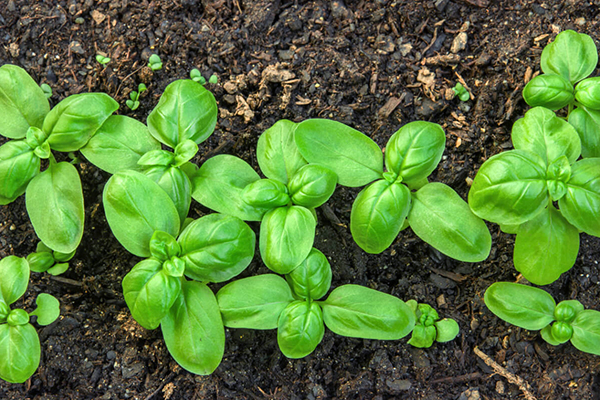
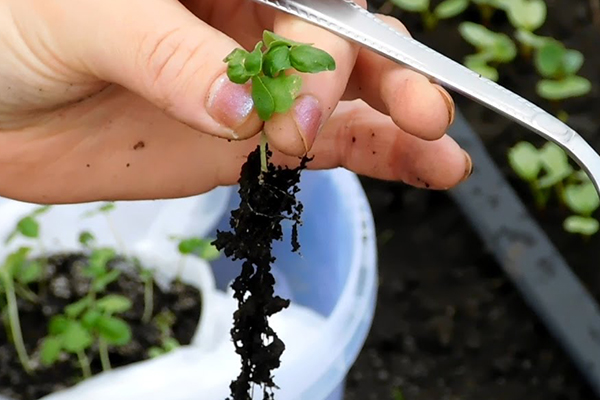
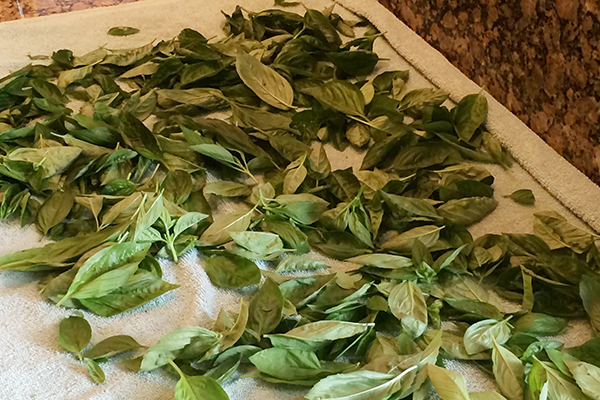
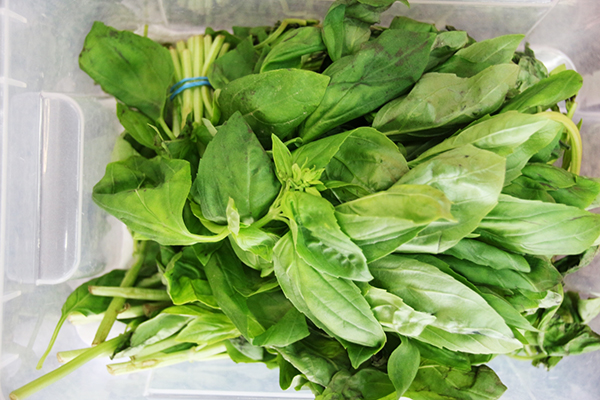
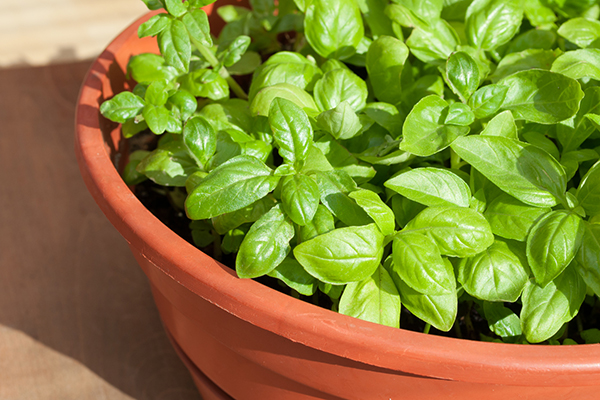
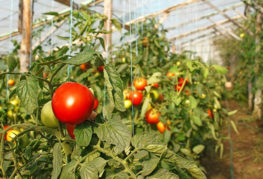
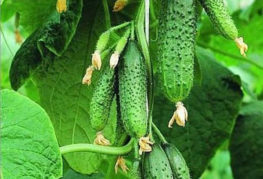

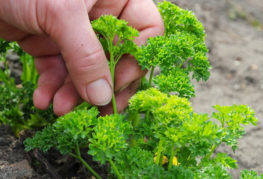
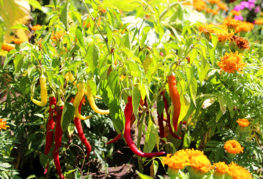
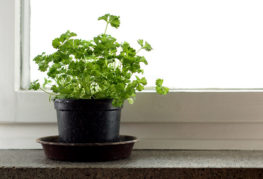
and will be published shortly.